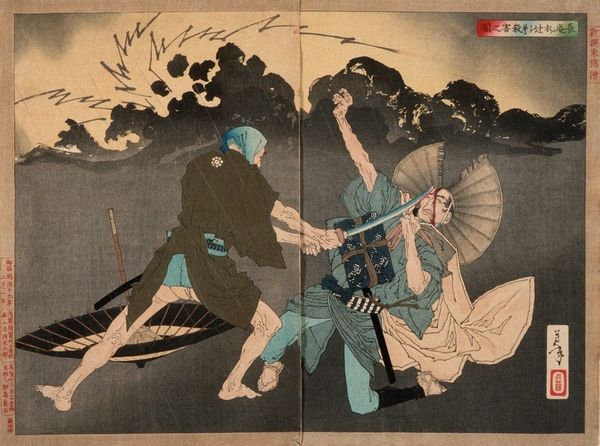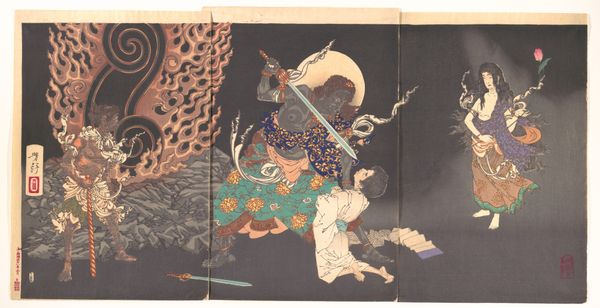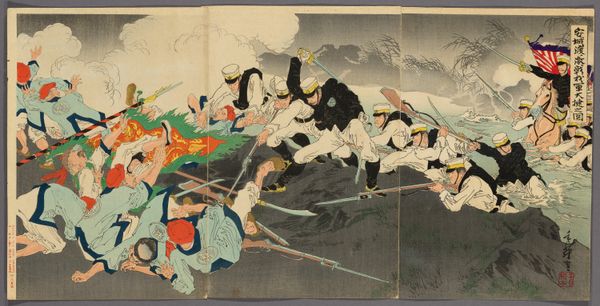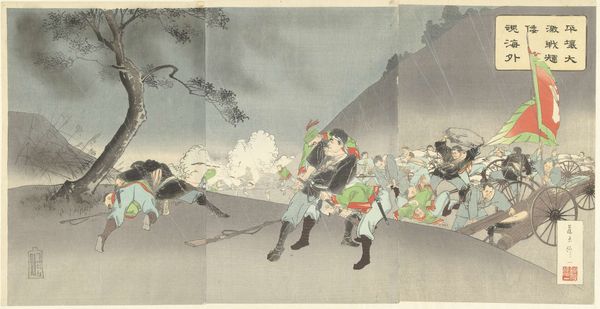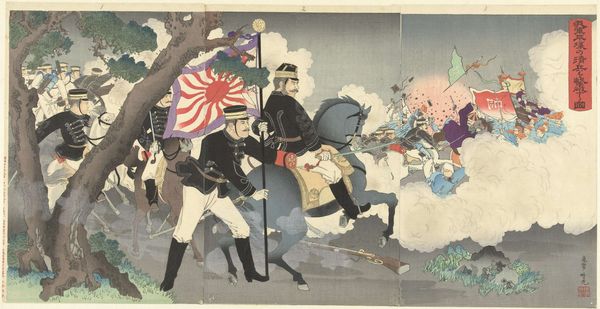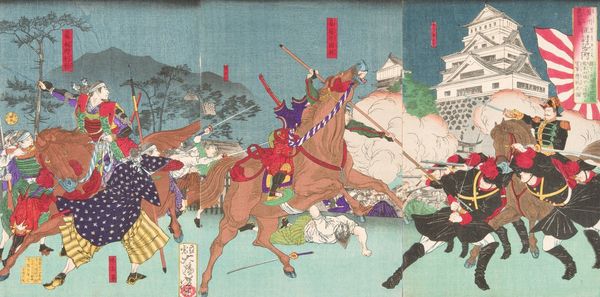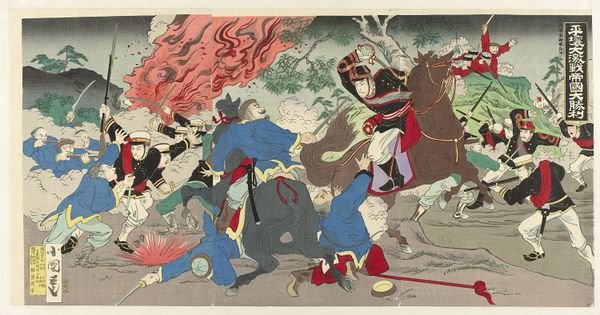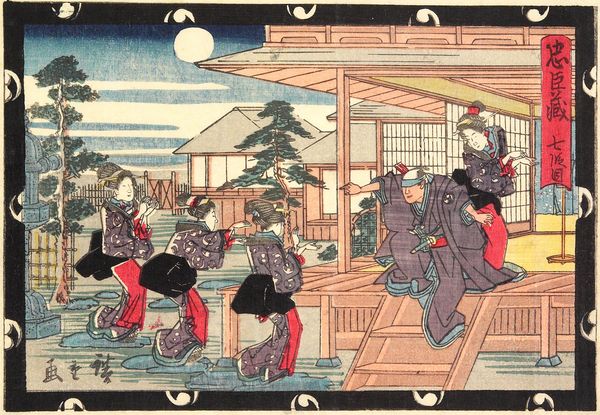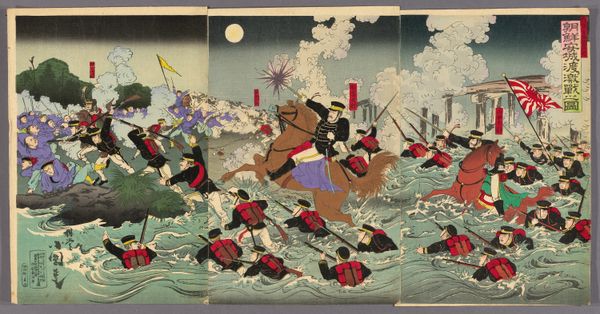
Dimensions: height 364 mm, width 729 mm
Copyright: Rijks Museum: Open Domain
Curator: This vibrant triptych is titled "Telegram verslagen uit Korea: het moedige leger" which translates to "Telegram Reports from Korea: The Courageous Army." Fujiwara Shin'ichi created it in 1894 using the woodblock print technique, placing it firmly within the tradition of Ukiyo-e prints. Editor: It’s arresting, this flurry of sharp spears slicing across the composition. The soldiers in green are chaotic against what looks almost like a cloudy sky. The sky and the sharp white lines of spears remind me of industrial materials like processed cotton or steel wire being fabricated. Curator: Precisely! Its creation came during a key moment in Japan's imperial ambitions, reflecting how art became intertwined with war and nationalistic fervor. Prints like these were mass-produced. Editor: Which speaks volumes about its accessibility and function as propaganda. You get a real sense of how woodblock printing allowed for such broad distribution. Think about the labor and resources involved – from sourcing the woodblocks to the skilled artisans executing the prints. Curator: Indeed, these prints played a vital role in shaping public perception, depicting Japan’s military prowess during the Sino-Japanese War. These images presented a very curated image. Editor: Curated to evoke the heroic but abstracted at the same time – almost inhuman with all the fog. I see the way the composition minimizes the enemy while glorifying the efficiency of Japanese troops in their Western-style uniforms. Curator: Note, also, how it adopts Japonisme; notice, say, Western techniques of perspective. The result blurs cultural boundaries and challenges conventions to present a modern, imperial Japan. Editor: Looking closer, the saturation in the colors speaks to a specific set of dyes, perhaps chosen for their boldness. What impact might that have had in the immediate consumption? Curator: That's a valid question. The bold colors, dynamic composition, and accessible medium converged to create a powerful and pervasive message about Japan's military might and its place in the world order. Editor: So this work does a lot with relatively simple materials – the layered impressions to achieve depth, the graphic sensibility… Curator: It serves as an example of how a mass medium became entwined with political power. The aesthetics of conflict meet the demands of propaganda. Editor: All thanks to skilled hands transforming raw materials into loaded images, literally in this case! Curator: An exercise, finally, in image-making.
Comments
No comments
Be the first to comment and join the conversation on the ultimate creative platform.
